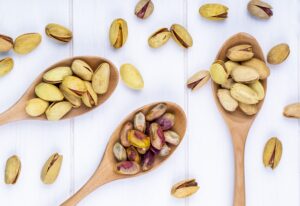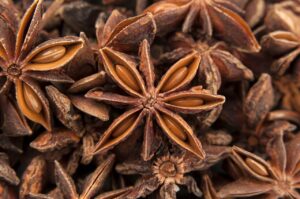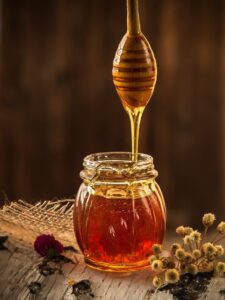The Therapeutic Uses of Liquorice – All You Need to Know

Liquorice, the sweet herb, has more to its credit than being a confectionary item. The therapeutic uses make this plant extract excellent herbal medicine for a variety of ailments.
Available as chewable tablets, liquid extract, capsules, and powder, liquorice is an age-old herbal ingredient that has established footholds in traditional medicine. Owing to its sweet flavor, the plant extract is often used in medicines to mask the unpleasant taste. You may have consumed candies, drinks, and other food products containing liquorice. The extract is available as a liquid supplement to treat heartburn, acid reflux, coughs, and common bacterial or viral infections. The liquorice tea is a traditional remedy for sore throat in many cultures, and its topical applications remain customary treatments for eczema or acne. But did you know that the extract has scientific backing for treating many disease conditions? So what is the deal about liquorice?
About Liquorice
The liquorice plant has many varieties. Two of the common ones include Glycyrrhiza glabra Linn and Glycyrrhiza uralensis Fisch. The plant is prevalently cultivated in Asia, the Middle East, and Europe. Liquorice is the extract of this plant’s root, and its traditional use dates back to ancient Assyrian, Egyptian, Chinese, and Indian cultures.
The word Glycyrrhiza is made out of two Greek terms; ‘glykos’ meaning sweet and ‘rhiza’ meaning root. The Chinese call it Gancao, which means sweet herb. Glycyrrhizin constitutes 10-25% of the liquorice and is about fifty times sweeter than refined sugar. The Egyptians made a sweet drink out of this root extract. The extract, known for its thirst-quenching properties, was used by soldiers on the battlefield to suppress the need for water.
The Food and Drug Administration (FDA) tags liquorice under the GRAS category. It means that the ingredient is safe for human consumption if taken in appropriate doses. The biological effects of liquorice are due to its secondary metabolites, including:
- saponins
- Flavonoids
- Isoflavonoids
- Chalcones
- Coumarins
- Phenols
- Aurones
- Benzofurans, and so on
Liquorice has its side effects if taken in excess. The World Health Organization recommends keeping the intake within 100mg per day. Since the extract is known to interact with several modern drugs like anticoagulants and anti-platelets. So a judicious use after consulting your physician is always suggested.
The herbal extract is known to treat a variety of conditions like soothing an upset stomach, reducing inflammation, and treating upper respiratory problems. Present-day medicine makes use of liquorice as a dietary and herbal supplement. Read on to get a detailed insight into how this sweet extract may work to bring health benefits.
1. Liquorice uses in dentistry
Bacteria are becoming drug-resistant, causing havoc for human health at all fronts, including oro-dental well-being. Liquorice provides a safe, effective, and cost-efficient option for many diseases of the oral cavity. Liquorice extracts has many bioactive ingredients. These include glabridin, licoricidin, licorisoflavan A, licochalcone A, and glycyrrhizin. These are proven beneficial in preventing and treating oral diseases like
- Dental caries
- Oral candidiasis
- Gingivitis
- Periodontitis
- Recurrent aphthous ulcer
- Oral cancer
Liquorice exhibits anti-inflammatory, anti-adhesive, and anti-microbial properties that come in handy while addressing these oral conditions. The metabolites of liquorice have shown inhibitory effects on Streptococcus Mutans, bacteria responsible for dental caries. A study showed that lollipops containing glycyrrhizol A when consumed for ten days twice daily, lead to a marked reduction in saliva’s S. mutans content (1). An in-vitro study revealed that glycyrrhizic acid inhibits the multiplication of S. mutans (2).
Many studies have found liquorice as a promising agent against Candida Albicans, responsible for the mouth’s fungal infection, generally called oral thrush (3). Aqueous extracts of raw polysaccharides from G. glabra have shown to exhibit strong anti-adhesive effects against P. gingivalis (4). These bacteria adhere to ill-clean oral surfaces and act as a potential causative factor for childhood gingivitis and periodontitis onset in adults.
It is observed that the inflamed gum tissues of patients with periodontitis contain high amounts of pro-inflammatory markers as interleukin (IL)-1beta, IL-2, IL -6, IL-8, and others. Liquorice extract delivers a potent anti-inflammatory response against these, thereby implying its possible role in safeguarding against periodontitis (5).
Recurrent aphthous ulcers in the mouth are small yet painful sores that are slow to heal and may become complicated with superadded infections. Liquorice is found to ease the pain associated with these ulcers and reduce the overall healing time. A study reported that over-the-counter Canker Melts GX patches that contain liquorice reduce the ulcer size and alleviate pain (6). In another randomized, double-blind clinical trial with 23 subjects, the same observations were made with placebo patches and patches with liquorice (7).
Liquorice is also an active topic of research as regards oral cancer. Two flavonoids extracted from liquorice has shown significant chemotherapeutic effects. These include Isoliquiritigenin (ISL) and Licochalcone A. the former has proved to be an inhibitor of tumor angiogenesis (8). At the same time, the latter induces apoptotic cell death of oral squamous cell carcinoma cells (9).
Though the research is still in infancy, liquorice has also been an effective root canal irrigant ingredient because of its anti-bacterial and anti-cytotoxic properties (10).
2. Liquorice as an anti-viral and anti-microbial agent
Traditional Chinese medicine has used liquorice for its supposedly life-enhancing properties and enhancing qi. Viral and bacterial infections remain the main causative factors behind many prevalent diseases. With drugs becoming resistant and patients becoming less compliant regarding conventional medicines, liquorice has come up as a safe remedy owing to its anti-viral and anti-microbial properties.
Among the 300 flavonoids present in liquorice, glycyrrhizin (GL) and 18β-glycyrrhetinic acid (GA) possess anti-viral activities. Some of the anti-microbial agents found in liquorice include liquiritigenin (LTG), licochalcone A (LCA), licochalcone E (LCE), and glabridin (GLD), in addition to GA.
The findings indicated a possible role of GL in treating patients suffering from chronic hepatitis C (11). In another study, researchers found that treatment with GL inhibited HCV titer in hepatitis C patients (12).
Many studies have highlighted the beneficial role of licorice aqueous, ethanol, and supercritical fluid extracts in inhibiting Gram-positive bacteria and Gram-negative bacteria—for example, Staphylococcus aureus, Escherichia coli, Pseudomonas aeruginosa, Candida albicans, and Bacillus subtilis (13) (14) (15).
GL and GA exhibit their anti-viral effects via weakening the virus activities by;
- inhibiting virus gene expression and replication,
- reducing adhesion force and stress, and so on
Other flavonoids, especially chalcones, act as a safeguard against bacterial infection by;
- decreasing expression of bacterial genes,
- inhibiting bacterial growth and
- reducing the production of bacterial toxin
3. Liquorice for liver disease
Liquorice is one of the most prevalently used herbal ingredients in traditional Chinese medicine for treating liver disease. It is also an effective remedy for ailments arising from drug-induced liver injury (DILI). Many bioactive components of liquorice have a promising role in this regard, including glycyrrhizin, glycyrrhetinic acid, liquiritigenin, Isoliquiritigenin, licochalcone A, and glycycoumarin. Evolving evidence suggests the possible role of these natural products via mechanisms like;
- anti-steatosis
- anti-Oxidative Stress
- anti-inflammation
- immune-regulation
- anti-fibrosis
- anticancer
- drug-drug interactions
Glycyrrhizin (GL) has been shown to exert effective therapeutic activity to treat chronic hepatitis C. It is known that oxidative stress has an established role to play in liver disease and DILI. Evidence that GL extracted from liquorice also caters for anti-oxidative stress activity in liver cells and helps preserve the levels of glutathione (GSH), an endogenous anti-oxidant (16).
There is mounting evidence of GL direct role in regulating the production of inflammatory cytokines and chemokines, implying the metabolite role in improving inflammation and liver induced disease processes (17). The role of GL in cholestasis, liver fibrosis, and cancer, and drug metabolism is also gaining the spotlight. Likewise, many research pieces are also revealing noteworthy beneficial effects of GA, ISL, Liquiritigenin, Licochalcone A, Glycycoumarin, etc., on the liver and its functions.
4. Liquorice for upper respiratory tract conditions
The plant extract has been a popular remedy in ancient times for improving the hoarseness of voice and dry cough. Liquorice has profound anti-inflammatory and anti-microbial upshots, making the extract an ideal treatment for upper respiratory tract ailments like sore throat and asthmatic conditions (18) (19). The research has been conducted in animal and human studies, where the latter showed encouraging results that still require a long-term probe into the subject.
5. Liquorice for peptic ulcer
Liquorice may help treat peptic ulcers, painful sores that develop in the lower part of the stomach, esophagus, or initial part of the small intestine. The condition is inflammatory that arises due to the action of Helicobacter Pylori bacteria. An animal study showed that 91 mg per pound of bodyweight of liquorice administration resulted in a better prognosis of peptic ulcers than omeprazole, a common drug for peptic ulcers (20). A two-week study in humans showed the same positive results upon consuming liquorice compared to standard ulcer treatment (21).
6. Liquorice for skin
A two-week study involving 60 adults used a topical gel containing licorice root extract for eczema (22). The results were very encouraging. Though liquorice is also typically used for treating acne, there is a lack of credible scientific evidence for its anti-acne upshots. The plant extract has a historical reputation for treating wounds and skin lesions, so catering to liquorice’s skin conditions remains a topic for modern-day researchers.
7. Liquorice for digestive issues
Liquorice is an age-old remedy for burning sensations in the stomach and liver ailments. It is also recorded as a treatment for other stomach diseases as indigestion and of the intestine. Modern-day medicine also makes use of this therapeutic effect of liquorice. A 30-day study was carried out involving 50 adults with complaints of indigestion (23). They took a 75-mg licorice capsule twice daily. They showed significant improvements in symptoms as compared with the placebo group. Another study was conducted on 58 adults showed that the daily use of licorice root was more effective at reducing symptoms over two years than commonly used antacids (24).
Takeaway
There are many ways to consume the plant extract liquorice. The plant extract is an excellent herbal medicine for many human diseases. Its role in preventing and treating digestive and liver ailments and preserving the oro-dental health certainly deserve research and therapeutic application.






